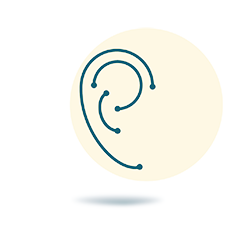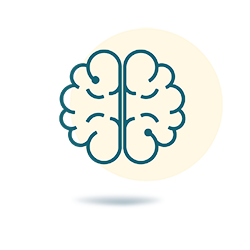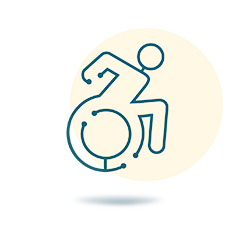Assistive Technology (AT) is any item, software, piece of equipment, or product system, whether acquired commercially, modified, or customized, that is used to increase, maintain, or improve the functional capabilities of individuals with disabilities. You can learn more about AT terms by visiting Mada Accessibility & AT Glossary page.
The International Classification of Functioning, Disability, and Health (ICF) provides a framework for describing and organizing information on functioning and disability.
Mada AT category classifications has been developed according to the International Classification of Functioning, Disability, and Health (ICF) domains part (1) issued by the World Health Organization, which includes two components:
First: Body Functions
Second: Activities and Participation
Please visit the ICF webpage to learn about the ICF.
Please click on the relevant link below to learn more about Assistive Technology.
Assistive Technology by Body Functions
Assistive technology provides a wide range of solutions for people who have disabilities and functional limitations in human senses such as vision, hearing, communication, mobility and cognition, to improve their functional abilities.

Sensory – Hearing
Assistive technology for persons with hearing impairment either amplifies sound or converts it into visual or tactile signals.
These products are designed to assist deaf and hard-of-hearing people who need help with communication, access to media, and awareness of the sounds around them.

Sensory – Vision
Assistive technology for persons with visual impairment supports visual stimuli such as the sense of shape, size and color.
Individuals who may benefit from this technology include blind persons, persons with low vision, or with conditions limiting their ability to recognize visual stimuli.

Voice and Speech
Assistive technology for verbal communication, also known as augmentative and alternative communication (AAC) devices, help people with speech difficulties communicate verbally or face to face.

Mental – Cognitive
Assistive technology for persons with cognitive limitations supports mental functions such as memory, language, calculation, and organization.

Neuromusculoskeletal Movement
Assistive technology for persons with limited functions of joints, bones, reflexes and muscles supports their movement, access and mobility
Assistive Technology by Activities and Participation
Assistive technology provides a wide range of solutions for people with disabilities to support their independence and participation in various tasks and activities in their life areas such as education, employment and society.
![]()
Mobility and Transportation
Assistive technology for mobility and transportation help persons with limitations for moving around or transferring from one place to another.
![]()
Self-care
Assistive technology for self-care helps individuals complete everyday essential activities such as dressing, bathing, eating, cleaning, or meal preparation.
![]()
Recreation and Leisure
Assistive technology for recreation and leisure provides accessible solutions to participate in and enjoy leisure activities such as gaming, listening to audio content, or watching TV.
![]()
Communication
Assistive technology for communication assists people communicating in multiple ways such as verbal, text, video, signs and symbols.
![]()
Education
Assistive technology for education enables students to engage in inclusive learning environments and enhance opportunities for lifelong learning.
![]()
Employment
Assistive technology for employment enables persons with disabilities to engage in work and jobs to improve their accessibility, productivity, and independence.
![]()
Interpersonal interactions and relationships
Assistive technology for interpersonal interactions and relationships assists managing person’s emotion, social, and behavior to increase appropriate social interactions and participations.
![]()
Environmental Control
Assistive technology for environmental control assists persons to facilitate manipulation and operation of various devices in the home, workplace, and in public.
